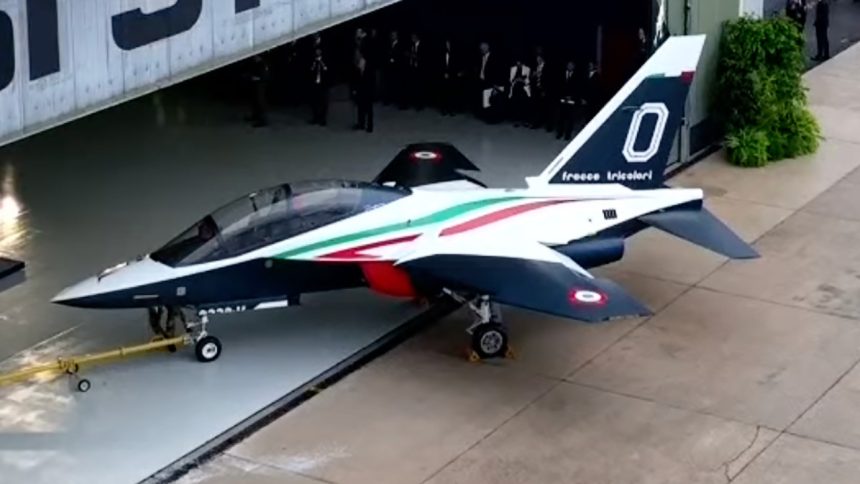After more than 40 years, the Frecce Tricolori will replace their aging MB-339s with the M-346 Advanced Jet Trainer, reverting the decision to equip the team with the M-345 High Efficiency Trainer.
The Italian Air Force announced today that the M-346 Advanced Jet Trainer (T-346A in accordance with the Italian MOD Mission Design Series) was chosen as the successor of the team’s MB-339s. In fact, while the initial plan was to equip the Frecce Tricolori with the M-345 High Efficiency Trainer, chosen to replace the ItAF fleet of MB-339s, the decision has now been reverted.
Once the T-345’s issues are addressed, the aircraft will be used by the 61° Stormo (Wing) for Phase 2 and 3 training, replacing the aging MB-339A jets. However, the T-345 was not deemed suitable for large formation aerobatics, which is a defining characteristic of the Frecce Tricolori. Instead, the team will benefit from the impressive performance of the new T-346 Master, whose enhanced thrust and maneuverability will be crucial in maintaining the breathtaking quality of the team’s air displays.
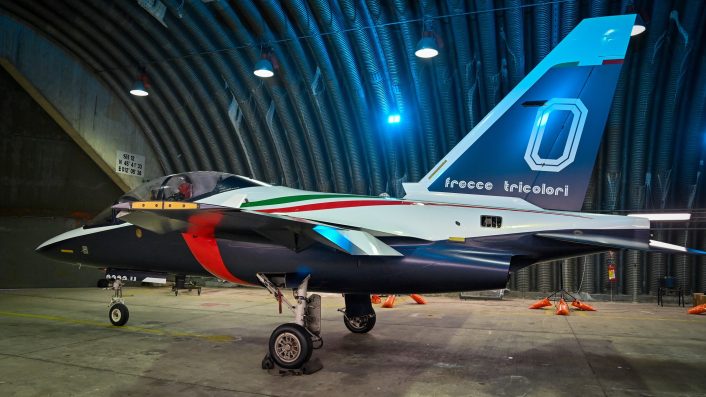
The new aircraft, adorned with the team’s livery, was officially unveiled at Istrana Air Base in northeastern Italy during a ceremony attended by Italy’s Minister of Defense Guido Crosetto and the Italian Air Force Chief of Staff Gen. Luca Goretti. The event celebrated the Frecce Tricolori’s return from their North America Tour 2024, a “monumental effort”, considering the age of the current aircraft, the length of the deployment (approximately 90 days), and the number of displays carried out during the tour: from June 10 to September 5, 2024, the display team participated in nine airshows and 17 flyovers across the U.S. and Canada.
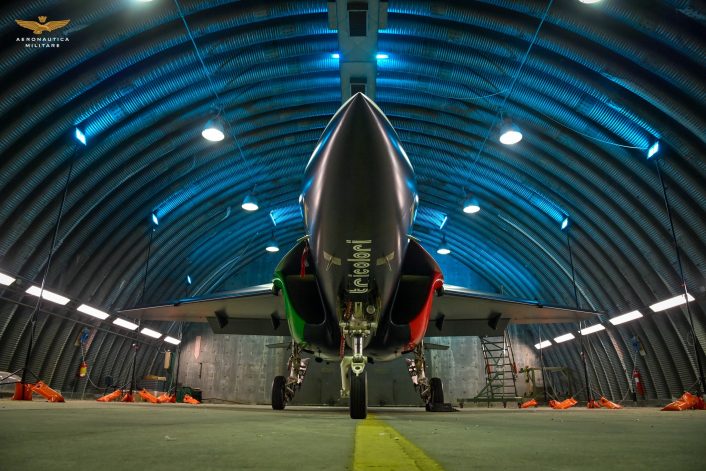
The livery of the new M-346, which was given the number “0”, was designed by Pininfarina, the renowned Italian design and engineering firm famous for its work in the automotive industry, particularly in the design of luxury and high-performance vehicles.
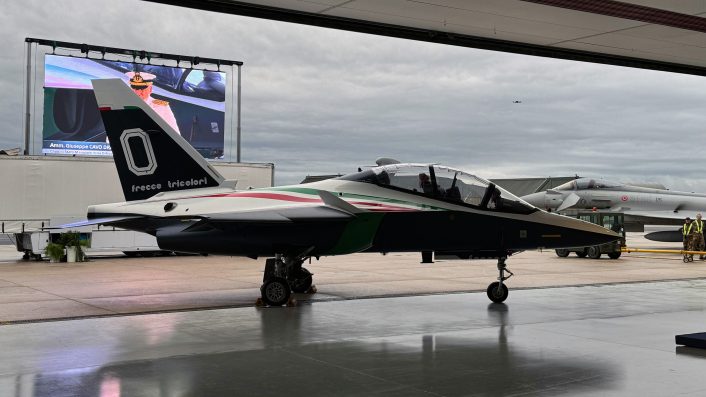
The MB-339 and M-346
The MB-339 was born as a replacement for the MB-326, previously used to train Italian pilots, and designed with almost all Italian technology, with the exception of the Rolls-Royce Turbo Viper 632 engine. The MB-339 flew for the first time in 1976 and was introduced in service in 1981, immediately demonstrating great capabilities both as advanced trainer and as ground attack aircraft.
The MB-339 became even more popular thanks to its adoption by the Frecce Tricolori National Aerobatic Team in 1982. The aircraft also had good commercial success outside of Italy, and has been in service in Argentina, Peru, Malaysia, New Zealand, Nigeria, United Arab Emirates, Eritrea and Ghana. Some MB-339s from New Zealand now found a second life with Draken International, which uses them to support training of allied air forces.
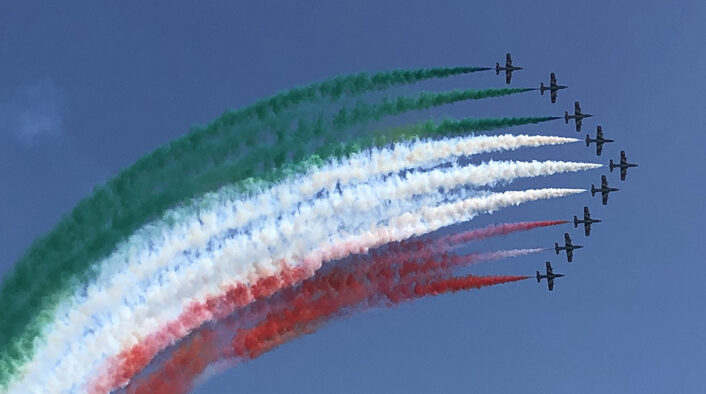
The MB-339 “Macchino” has also been for a long time a synonym of the 61° Stormo where, in the last 40 years, it graduated 2,500 pilots and flew for 400,000 hours. Even if it’s closing to the end of its service life, the MB-339 continues to demonstrate itself as an exceptional, safe, reliable machine, and is still used in the “analog” A variant for the Phase 2 training and in the “digital” CD variant for the Phase 3.
The Frecce Tricolori use a modified version of the MB-339A, called MB-339PAN. The aircraft features key modifications, such as the installation of a smoke system and the removal of the tip tanks, which can be reinstalled for extended-range ferry missions such as the North American Tour 2024.
The latter modification was required as the large tip tanks would limit the maneuverability during certain aerobatic maneuvers. In its standard display configuration, the MB-339PAN is equipped with two “dual use” underwing tanks that hold both fuel and the liquid used for the smoke production.
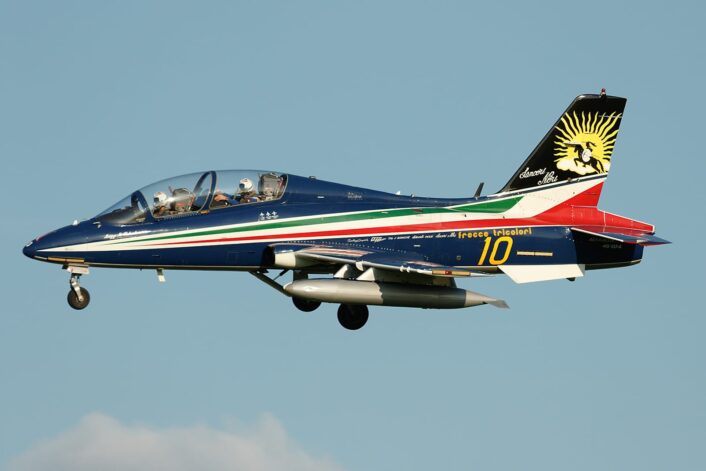
The M-346 was introduced in the Italian Air Force in 2015 and, since then, it prompted a revolution in the training, as it not only brought an aircraft, but an entire integrated system associated with simulators and multiple training aids. The performance of the aircraft, which are very similar to 4th and 5th gen aircraft, make the transition from the trainer to the Operational Conversion Unit extremely smooth, allowing also to offload training activities from the OCU to the Phase IV.
Thanks to its performance and capabilities, the T-346 is considered on the same level of the F-16 Fighting Falcon. Because of this, the M-346 has also been used as Aggressor aircraft during air combat training missions with great results since 2015. For an instance, during the Tactical Leadership Programme at Amendola Air Base in 2018, a T-346 was able to reportedly outmaneuver and “shoot down” with ease an F-15C during BFMs.
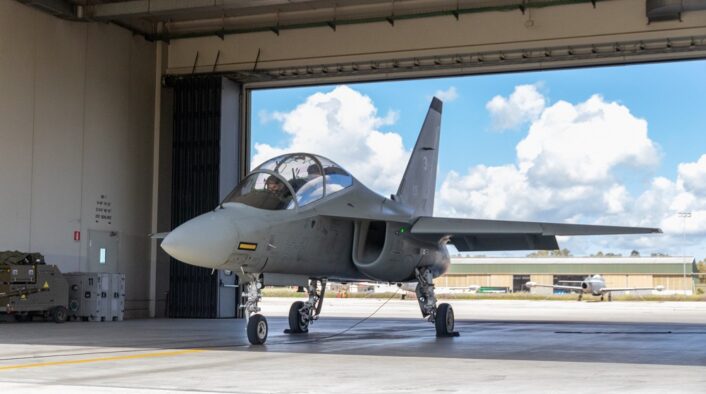
The aircraft’s performance have been further expanded recently, with the increase of the maximum allowed angle of attack from 25° to 30° and the increase of the G limit when the aircraft is equipped with a centerline external fuel tank from 5 G to 6 G. The different performance, compared to the MB-339, will require the Frecce Tricolori to adapt their flight display to the new aircraft.
The Italian Air Force currently operates 18 M-346s, which fly out of Decimomannu Air Base together with four Leonardo-owned aircraft as part of the shared fleet of the 61° Stormo and International Flight Training School. The Frecce Tricolori currently operate 11 aircraft, Pony 0 to Pony 10, plus a number of spares.
According to unverified rumors, the ItAF might acquire 15 new M-346s to equip the Frecce Tricolori. These 15 aircraft could be the Italian share of the joint M-346 acquisition with Austria which is currently being discussed, although details are still scarce.
The team’s history and aircraft
The Frecce Tricolori team is heir and guardian of the aerobatic flight’s tradition, which was born in the 1920s at Campoformido airfield, located a few kilometers north-east of Rivolto. Campoformido was the home of the 1° Stormo Caccia (Fighter Wing) and its commander, Lt. Col. Rino Corso Fougier, had the innovative idea in 1928 that aerobatic flight could be used as an essential part of a military pilot’s training to achieve mastery, sensitivity and coordination in any flight attitude, leading to the maximum effectiveness in the military use of the airplane.
The same year, three pilots flew the first demonstration with the Fiat CR.1 biplane fighters flying loopings in formation. The then Royal Italian Air Force was diffident but gave a go to this idea a year later to welcome the pilots who flew for the first from the United States to Rome. The exhibition was a triumph and Campoformido soon became the home of an aerobatic flight school. The school also created in the 1930s one of the most famous maneuvers still flown today by the Frecce Tricolori, the downward bomb burst.
With the years, the “experiment” was extended also to other units, like the 4° Stormo Caccia, and the number of exhibitions increased, together with the number of the aircraft involved in the formation maneuvers. With the threat of WW2 becoming more incumbent, 1939 saw the last Italian aerobatic exhibitions. The Italian Air Force resumed these activities in 1952 with the “Cavallino Rampante” (Prancing Horse), which flew with four DH.100 Vampire jets of the 4° Stormo.
The enthusiasm for this return led to the creation in 1953 of another team flying on four F-84G Thunderjets of the 5^ Aerobrigata (Air Brigade), named “Getti Tonanti” (Thundering Jets). A second team on four F-84Gs, this time from the 51^ Aerobrigata, was created in 1955 and called “Tigri Bianche” (White Tigers). 1957 saw the return of the “Cavallino Rampante”, which in the meantime was converted to the F-86E Sabre MK4. The team became the first to use smoke generators during their shows in Italy.
In the same year there was also a reserve team, the “Diavoli Rossi” (Red Devils) of the 6^ Aerobrigata. The team initially flew on four F-84F Thunderstreaks, which soon became six, including for the first time a solo which had the role to fill the space left by the main formation during its repositioning maneuvers away from the spectators. In 1959 the “Lanceri Neri” (Black Lancers) became the new main team, with “Diavoli Rossi” and “Getti Tonanti” as reserves. The new team flew initially with four Sabres, which were later increased to six.
The success of the five teams though the years convinced the Italian Air Force to better manage the aircraft and human resources, creating on March 1, 1961 the 313° Gruppo Addestramento Acrobatico (Aerobatic Training Squadron) at Rivolto Air Base. The core of the new unit was the “Cavallino Rampante”, which moved to Rivolto with its six F-86E jets (actually Canadian licensed-built CL.13s).
The new Pattuglia Acrobatica Nazionale (National Aerobatic Team) performed for the first time on May 1 (thus becoming the traditional day of the first exhibition every year), with the six F-86s fitted with smoke generators and painted in a dark blue livery, with a lighter diamond containing a black sword on the sides of the fuselage. A year later, the more famous blue livery with the three green, white and red frecce (arrows) and the yellow tail number was applied for the first time, leading to the name Frecce Tricolori.
In 1963, the now nine-aircraft team received the G.91PAN, a specially modified variant of the Fiat G.91 light fighter aircraft. For the first time since WW2, an Italian aerobatic team was now equipped with Italian-made aircraft, which also allowed a more aggressive display routine and a tighter space required to maneuver. A few years later, in 1966, the solo was added to the formation, with the Frecce becoming the only team in the world to fly with ten aircraft.
In 1982, the MB-339PAN was delivered to Rivolto. Since then, the Frecce begun to fly tours around Europe and the world, winning numerous prizes. Now, after 60 years of history and almost 40 years flying on the MB-339, the Frecce Tricolori are preparing for their next chapter, which will see them flying in a few years on the M-346, reverting the initial decision to equip the team with the M-345.

